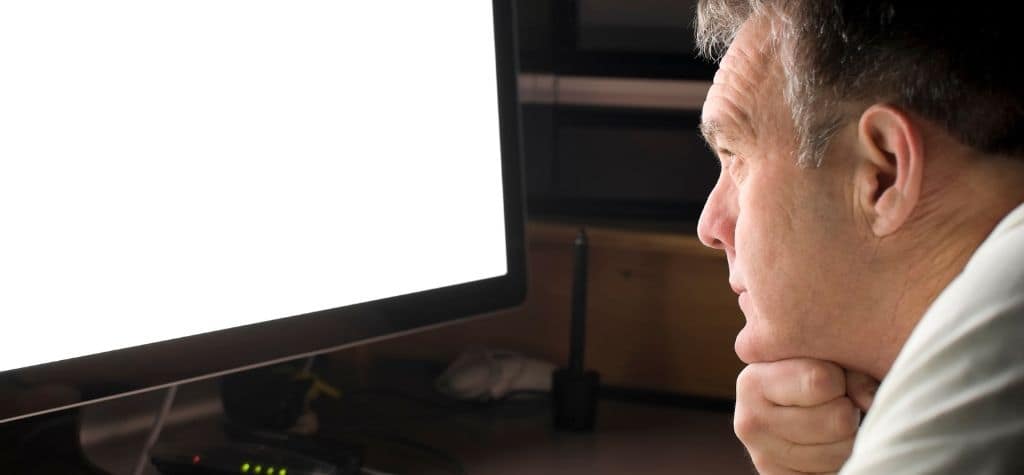In today’s digital world, screens are everywhere—phones, tablets, computers, and TVs have become an inseparable part of daily life. While technology makes life more convenient, excessive screen time can silently damage your eyes. Many people don’t realize that their daily habits contribute to eye strain, dryness, and even long-term vision problems.
Are you guilty of these screen-related mistakes? Here are six alarming screen time habits that could be wrecking your eyes—and how to fix them!
1. Staring at Screens for Hours Without Breaks

One of the worst habits for your eyes is prolonged screen exposure without breaks. Many people spend hours glued to their devices, whether for work, gaming, or social media, without giving their eyes a rest.
Why It’s Harmful:
- Leads to digital eye strain, causing headaches, blurred vision, and discomfort.
- Reduces blinking frequency, leading to dryness and irritation.
- Increases risk of myopia (nearsightedness), especially in children.
How to Fix It:
- Follow the 20-20-20 rule: Every 20 minutes, look at something 20 feet away for 20 seconds.
- Take frequent breaks and blink intentionally to keep eyes moist.
- Use screen reminders or apps to alert you when it’s time for a break.
2. Using Screens Too Close to Your Eyes
Holding your phone inches away from your face or sitting too close to the computer screen increases eye strain and fatigue.
Why It’s Harmful:
- Forces the eye muscles to work harder to focus.
- Can lead to progressive myopia, especially in young people.
- Causes neck and shoulder pain due to poor posture.
How to Fix It:
- Keep screens at least an arm’s length away from your eyes.
- Adjust font size or zoom in instead of bringing the screen closer.
- Use ergonomic setups for computers to maintain proper posture.
3. Not Adjusting Brightness and Contrast
Many people use their devices with brightness settings that are either too high or too low, leading to eye strain and discomfort.
Why It’s Harmful:
- High brightness causes glare, making it difficult to focus.
- Low brightness forces eyes to strain to distinguish text and images.
- Increased exposure to blue light from screens can disrupt sleep cycles.
How to Fix It:
- Adjust screen brightness to match ambient lighting.
- Enable dark mode or blue light filters, especially at night.
- Use anti-glare screen protectors to reduce strain.
4. Skipping Blinking While Using Screens

On average, people blink 15-20 times per minute, but this reduces by up to 50% when staring at screens. This lack of blinking dries out the eyes, causing irritation, redness, and discomfort.
Why It’s Harmful:
- Leads to dry eye syndrome, making vision blurry and uncomfortable.
- Causes a burning sensation or redness after long screen sessions.
- Increases sensitivity to light, making it harder to focus.
How to Fix It:
- Consciously remind yourself to blink more often.
- Use artificial tears or lubricating eye drops to keep eyes moist.
- Follow the 20-20-20 rule to give your eyes a break.
5. Using Screens in the Dark
Many people scroll through their phones in pitch-dark rooms before bed, unaware of the strain this puts on their eyes.
Why It’s Harmful:
- Causes more contrast strain, forcing your eyes to adjust rapidly.
- Leads to increased exposure to blue light, disrupting sleep patterns.
- Can worsen headaches and migraines in light-sensitive individuals.
How to Fix It:
- Use a bedside lamp or dim background lighting while using screens at night.
- Enable night mode or blue light filters in the evening.
- Reduce screen time at least one hour before bedtime to improve sleep.
6. Ignoring Regular Eye Checkups
Many people assume they only need an eye exam if their vision worsens, but routine checkups help detect problems before they become serious.
Why It’s Harmful:
- Undiagnosed vision problems can worsen with prolonged screen use.
- Eye strain can be a symptom of underlying eye conditions like astigmatism or presbyopia.
- Delayed diagnosis of glaucoma, cataracts, or retinal issues may lead to irreversible damage.
How to Fix It:
- Schedule an eye exam every one to two years, even if you have no vision issues.
- Follow your optometrist’s recommendations for glasses or contact lenses.
- Report any persistent discomfort, headaches, or blurry vision to an eye specialist.
Final Thoughts: Protect Your Eyes from Screen Damage

With screen time at an all-time high, taking care of your eyes has never been more important. Small changes in your habits can make a huge difference in reducing eye strain, preventing dryness, and maintaining long-term vision health.
Start by implementing simple adjustments like taking breaks, adjusting brightness, and maintaining proper screen distance. Your eyes will thank you for it!
Which of these bad habits are you guilty of? It’s time to break them and prioritize your eye health today!
FAQs: Screen Time and Eye Health
1. Can too much screen time permanently damage my eyes?
No, but excessive screen use can cause digital eye strain, discomfort, and fatigue. Long-term exposure may also contribute to myopia progression.
2. How many hours of screen time per day is safe for my eyes?
Experts recommend limiting recreational screen time to 2 hours per day, with frequent breaks for work-related use.
3. Do blue light glasses really help?
Blue light glasses can reduce eye strain and improve sleep quality, but they do not completely eliminate screen-related vision issues.
4. What are the symptoms of digital eye strain?
Symptoms include dryness, blurred vision, headaches, sensitivity to light, and difficulty focusing after prolonged screen use.
5. Does screen time cause nearsightedness (myopia)?
Excessive screen time, especially at a young age, increases the risk of developing myopia, but genetics also play a role.
6. Can eye exercises reduce screen strain?
Yes, eye exercises like blinking, rolling the eyes, and focusing on distant objects can help reduce strain and improve focus.

